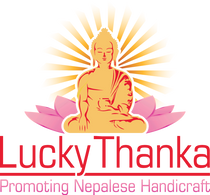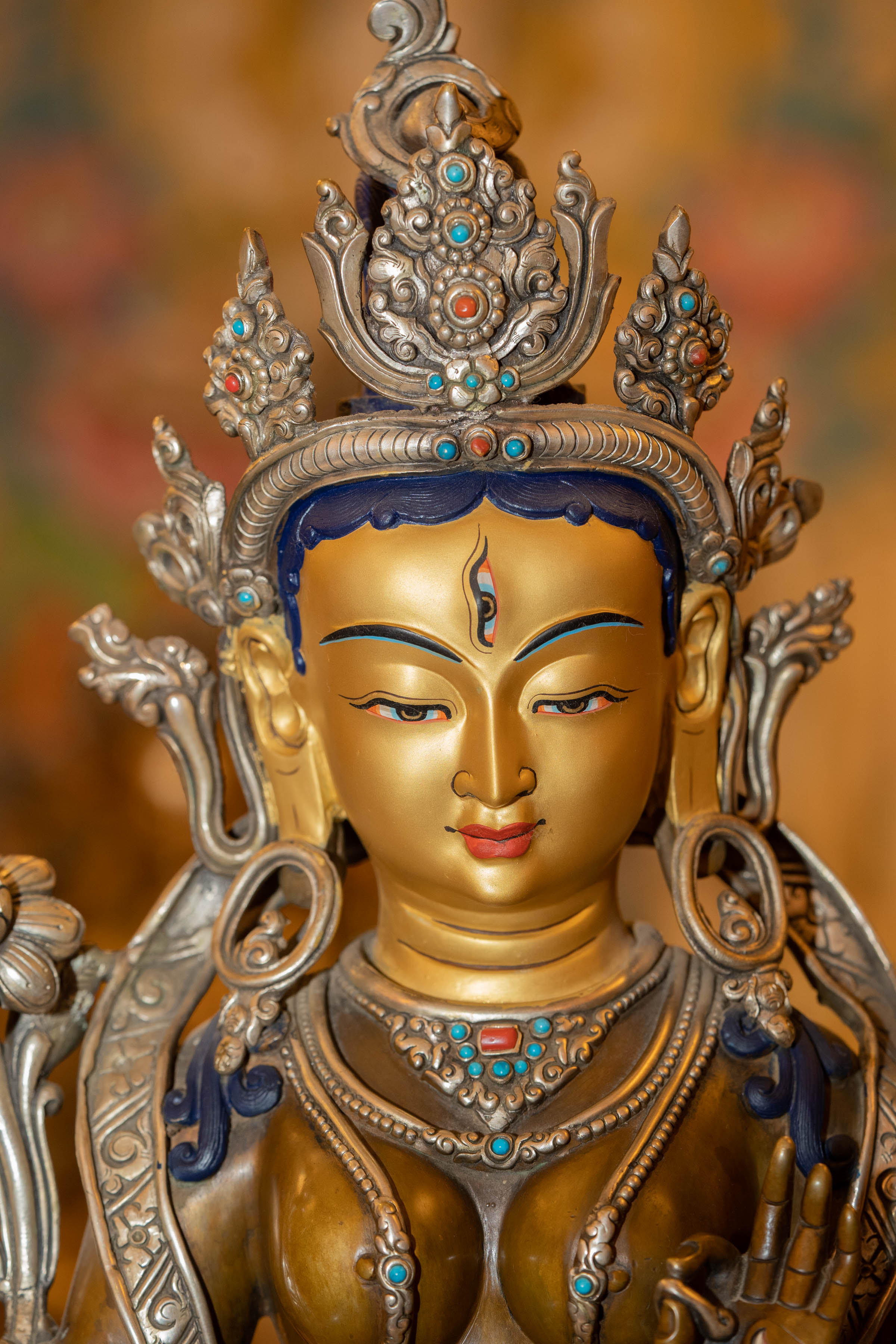The Becoming of Shakyamuni Buddha
Despite the fact that we commonly refer to them as "the Buddha," there are numerous Buddhas in Buddhism. Furthermore, the many Buddhas have different names and forms, as well as different roles. The term "Buddha" literally means "one who has woken," and in Buddhist teachings, every such enlightened being is referred to as a Buddha. The name Buddha is also widely used to allude to the concept of Buddha-nature. The Buddha, on the other hand, is a historical figure who is generally referred to as such. In Mahayana Buddhism, the historical Buddha is known as Shakyamuni Buddha.
When people mention Shakyamuni, they are almost invariably referring to the historical person Siddhartha Gautama. The person later was given the name Shakyamuni when he became the Buddha. Gautama Buddha is another name for this individual after he attained enlightenment.
Who is Shakyamuni Buddha?
Simply defined, Buddhism teaches that we all exist in a cloud of illusions caused by erroneous perceptions and "impurities" like as hatred, greed, and ignorance A buddha is a person who has been released from the blurring cloud. When a buddha dies, it is stated that he or she does not reincarnate but instead enters the serenity of Nirvana, which is not "heaven" but rather an altered condition of being.
When people usually mention the name of Buddha, they typically mean the historical individual who founded Buddhism. This was a guy named Siddhartha Gautama who lived around twenty-five centuries ago in what is now Nepal.
The Buddha's life narrative begins some 2,600 years ago in 463 B.C. Lumbini, which is now Nepal. Despite the fact that he was born a prince, he knew that conditioned experiences could not bring long-term enjoyment or protection from misery. He entered into profound meditation after a long spiritual journey, when he learned the nature of mind. For almost seven years, Siddhartha lived a life of great self-denial and discipline. He believed that by employing these methods, he would be able to get the knowledge he need to find his answers. After seven years, despite his frail and near-death physique, he was no closer to his goal than when he started. He realized that self-denial, like self-indulgence, was a hurdle to self-awakening.
After regaining his health, he sat in deep meditation at the root of a fig tree. After emptying his mind of all distractions, he awoke to the ultimate reality. The term Buddha, which means "Awakened One," was bestowed upon Shakyamuni. Shakyamuni Buddha, the Shakya clan's mentor, was his name from then on. He went out to offer his knowledge out of compassion. The Buddha then toured across India for the following 42 years, instructing individuals according to their understanding abilities.
He gradually increased their comprehension until they were ready to hear his ultimate instruction, the Lotus Sutra. The Buddha taught the Lotus Sutra for the last eight years of his life. Amid the year 383 B.C., he died quietly in a grove of sala trees.
The Buddhist Demon Mara and Shakyamuni Buddha
There are many mythical entities in Buddhist literature, but Mara is one of them. He's one among the first non-human beings to appear in Buddhist writings. One of the first non-human figures to emerge in Buddhist scriptures is Shakyamuni Buddha. Mara is most recognized for his role in the Buddha's historical enlightenment his story got mythologized as a massive battle with Mara, whose name means "destruction" and who represents our entangled and deceiving impulses.
During his meditations, The Buddha was interrupted by Mara during his meditations. Mara sent his army, a slew of temptations, and a challenge to the Buddha to defend his claim to enlightenment. The Buddha reached out and touched the earth, inviting it to see his accomplishment. In this artwork, "touching the soil" is viewed as a meaningful gesture (mudra). The Buddha's imagery became immensely popular across Asia.
Mara can be seen not just as a character in a narrative, but also as a symbol for inner temptations—most notably one's ego—that hinder one's journey to enlightenment. As a result, defeating Mara is the same as defeating the self.
Symbolism of Shakyamuni buddha in thangka

Three elements, "dharma," or spiritual belief, and the "sanga," or Buddhist community, are supposed to assure Shakyamuni Buddha's presence on Earth. They are known as the three gems of Buddhism when they are together (Buddha, Dharma and Sanga).
Hundreds of copies of these motifs may be found all over the world. Despite this, practically every depiction will have a set of qualities that are almost similar. These are the characteristics that allow us to distinguish amongst the numerous Buddhas.
Shakyamuni Buddha is depicted in a thangka seated on a lotus throne on which the sun and moon are symbolically placed, painted in gold or beige, and dressed in monastic robes. His lotus seat represents the act of existing in this world while remaining unaffected by its flaws. The sun is associated with "prajna," or knowledge. The moon symbolizes "upaya," or the deliberate act of kindness.
Shakyamuni's thangka also includes the dhyani, or meditation mudra which is held in the left hand. While the right hand is in the Bhumisparsa mudra, which means "taking the ground as a witness" alludes to his victory against Mara just before his complete awakening. He is frequently shown alongside his two students, Sariputra, who is known for his knowledge, and Maudgalyayana, who is known for his miraculous abilities. Both disciples are thought to be Brahmins who studied the Vedas before becoming Buddhist initiates.
The Buddha is frequently shown on a throne flanked by two lions, however this is not always the case. Buddha is a king among the godly, much as lions are supposed to be among the animals. Occasionally, we encounter an opulent backrest with six magical animals. This refers to the six paramitas, or perfections, which are the essential attributes for achieving Buddhahood.
Four Noble Truth from Shakyamuni Buddha
The Buddha's teachings are condensed into the Four Noble Truths. During his meditation under the bodhi tree, the Buddha came to grasp these four concepts:
1. Dukhha
Our lives are a struggle, and we don't attain ultimate happiness or contentment in anything we accomplish, according to the Buddha. This is the existential conundrum.
In other words, Suffering is a true and nearly universal experience. Suffering can be caused by a variety of factors, including loss, illness, suffering, failure, and the fleeting nature of pleasure.
2. Samudāya
There is a reason for the pain. Attachment is the cause of suffering. It's the drive to own and exert control over things. It can take various forms, including a desire for sexual pleasures, fame, or the drive to avoid negative feelings such as fear, wrath, or jealousy.
3. Nirodha
Suffering does have an end. It is possible to break free from an attachment. The final freedom of Nirvana brings an end to suffering (Nibbana). Complete freedom, emancipation, and non-attachment are experienced by the mind. It satisfies all desires and satisfies all cravings.
4. Magga
Because we are the root of our issues, we are both the cause and the remedy. We have no control over what occurs to us, but we do have control over how we respond to it. The Eightfold Path must be followed in order to put a stop to suffering. There is a road for you to take.
Eight Fold Path of Buddha

The Eightfold Path avoids both indulgence and severe asceticism, which the Buddha found to be ineffective in his quest for enlightenment.
1. Samma ditthi: Right Understanding
The true knowledge of the four noble truths is correct view. Accepting the teachings of Buddhism. The Buddha never meant for his disciples to accept his teachings at face value, but rather to put them into practice and determine for themselves whether they were correct.
2. Samma sankappa: Right Thinking
The sincere desire to be free of attachment, ignorance, and hatred is known as right aspiration. A dedication to developing positive attitudes.
3. Samma vaca: Right Speaking
Avoiding slander, gossip, and unpleasant speech by speaking genuinely.
4. Sammā kammanta: Right deed
Right Action entails refraining from harmful acts such as murder, theft, and indiscriminate sex. The Five Precepts are what they're named.
5. Samma ajiva: Right Livlihood
Sustain oneself without causing harm to others. Making a living in a way that avoids dishonesty and harming others, especially animals, is what it means to live a just life.
6. Samma vayama: Right Effort
Cultivating pleasant mental states; removing oneself from harmful and unwholesome states and preventing future occurrences.
7. Samma sati: Right Mindfulness
The practice of concentrating one's attention on one's body, feelings, thoughts, and awareness in order to transcend desire, hate, and ignorance is known as right mindfulness.
8. Samma samadhi: Right Concentration
Developing the mental attention that is required for this level of awareness. It is meditating in such manner that a true awareness of imperfection, impermanence, and non-separateness gradually emerges.
The Buddha compared the Eightfold Path to a raft for crossing a river bridge on the way to enlightenment. When one reaches the opposite shore, the raft is no longer required and can be left behind.





